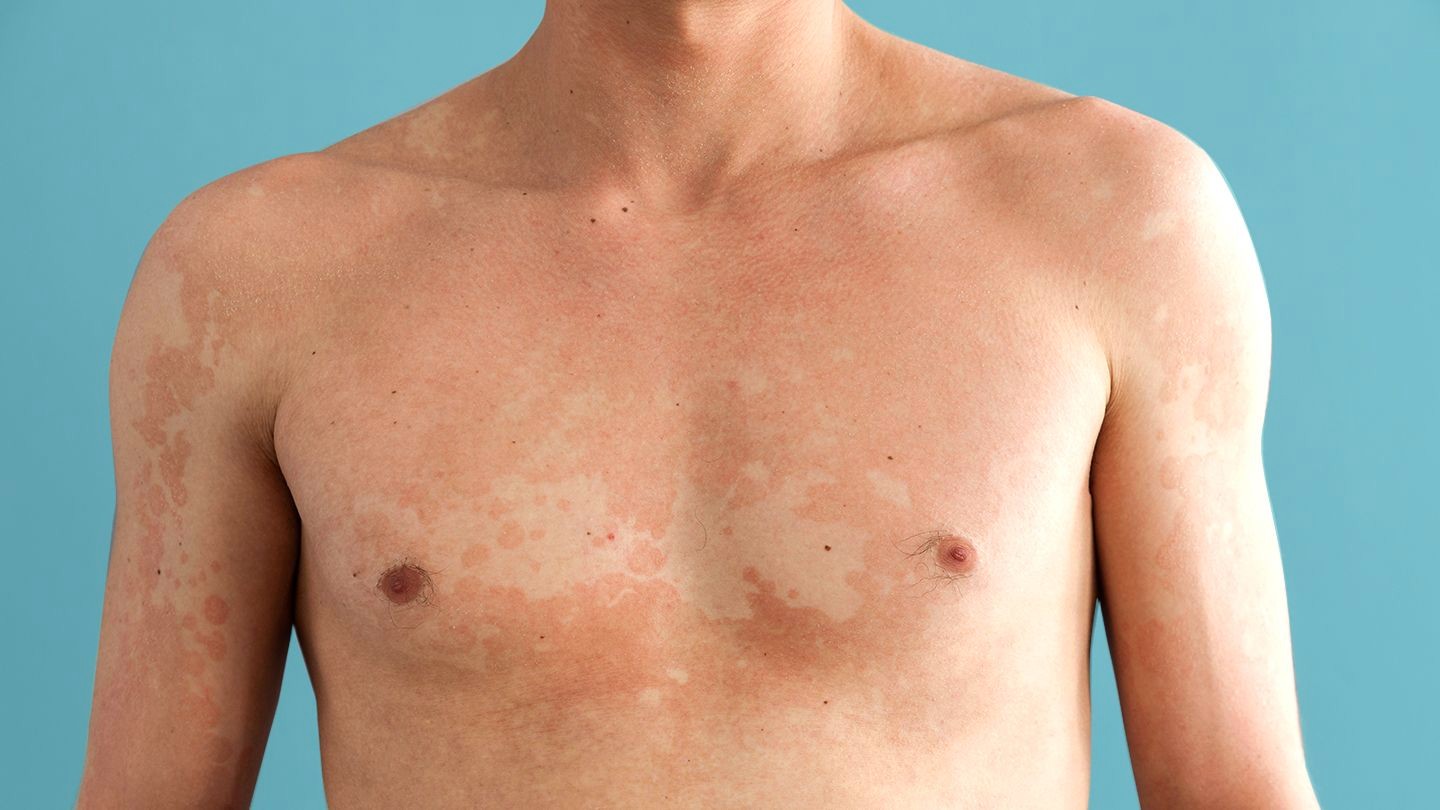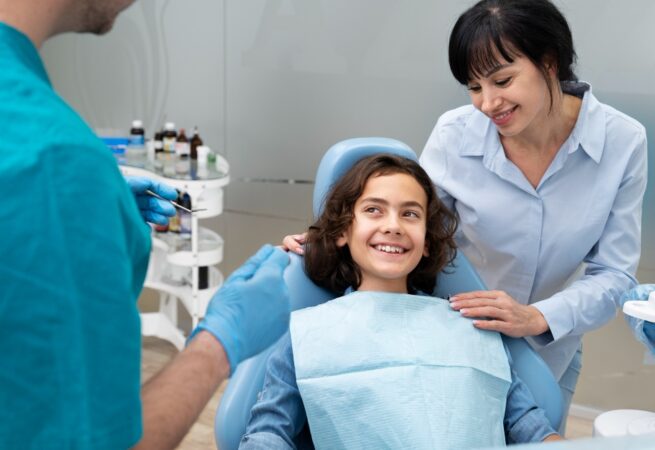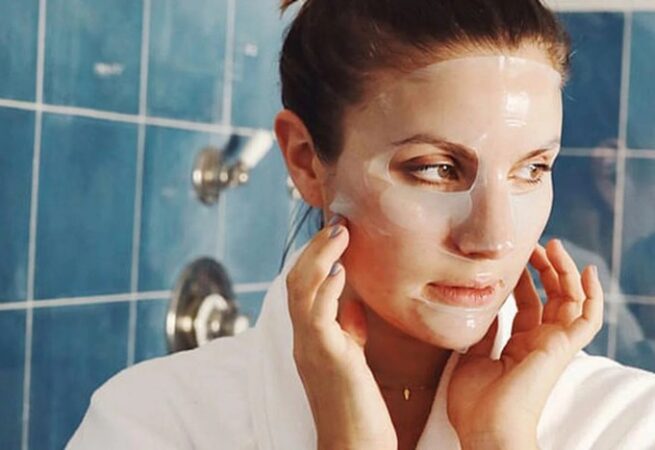

What are tumor markers in blood test?
Health is always a thing that is taken for granted. People will only appreciate the gift of health when they actually experience some form of disease or sickness. There are many forms of health problems that affect people of all ages. One of the terrifying forms of disease affecting health greatly is cancer. It is so terrifying that even mentioning the word ‘cancer’ can send shivers down the spine in a split second. There are more than 100 types of cancer that have been identified. 50{a2a46ec55642e682a71e8cca36f3803ecd4bd950ef2bece5716193f567526501} of all cancer cases are actually preventable which means regular health screening should be able to detect it at its early stage. In this article, we will be learning about tumour markers in blood tests that are associated with cancer diagnosis.
Tumour marker is a substance produced by the body as a response to cancer or certain benign conditions. It has traditionally been proteins or other substances that are produced in higher amounts by the cancer cells than the normal cells. In general, tumour markers can be found in the blood, urine, stool, tumour and other tissue or body fluids of a person with cancer. Tumour markers are also known as biomarkers. Some of these tumour markers are specific to one cancer whereas some may be seen in several types of cancer. Testing for tumour markers in blood tests is usually performed by taking a sample of blood to be analysed in the laboratories.
There are two main types of tumour markers: tumour tissue markers and circulating tumour markers. Tumour tissue or cell markers are found in the tumour, typically in a sample of tumour obtained from biopsy. Circulating tumour markers are found in blood, urine, stool or other body fluids. Hence, tumour markers in blood test are classified as circulating tumour markers.
It is true that high tumour marker levels can be a sign of cancer. Tumour marker tests, specifically circulating tumour marker is used for several reasons such as to estimate the prognosis or outcome of the cancer, to determine the stage of cancer, to identify remaining cancer cells after treatment, to identify if the cancer cells have returned after treatment (recurrence), to assess treatment progress and as a monitor to know if a treatment has stopped working or ineffective.
In reality, circulating tumour markers are not enough to diagnose cancer although elevated levels of this marker may suggest a person with cancer. This is because even noncancerous conditions may lead to an increase of certain tumour markers. Plus, people with a particular type of cancer may not have a higher level of tumour marker to be suspicious with the specific cancer. Some cancers do not produce tumour markers that can be found in the blood test. Thus, circulating tumour markers are usually combined with other results such as from biopsy or imaging test to diagnose cancer.
Example of commonly used tumour marker in blood test includes:
1) Calcitonin- One of the hormones produced by thyroid but increased of calcitonin level is associated with medullary thyroid cancer. Calcitonin biomarkers are most often used to diagnose medullary thyroid cancer, to know if treatment for the cancer is working, to check for recurrence possibility and to estimate prognosis.
2) CA 125- Ovarian cancer is the most common cause for elevation of this biomarker but cancers of the uterus, cervix, breast, lung, liver, pancreas, colon and digestive tract may also raise the level. CA 125 is mainly used to monitor how well treatments for ovarian cancer.
3) Beta-2 microglobulin- Increased amount of this biomarker in blood could indicate cancer such as multiple myeloma and lymphoma.
4) Alpha-fetoprotein (AFP)- Elevated level of AFP may indicate liver cancer or cancer of ovary/testicle.
5) Beta-human chorionic gonadotropin (Beta-hCG)- May indicate cancer in testis, ovary, liver, stomach, pancreas and lung.
6) Carcinoembryonic antigen (CEA)- Colorectal cancer is the most common cancer that elevates this tumour marker.
7) Prostate-specific antigen (PSA)- High level of PSA level may indicate prostate cancer but noncancerous conditions such as benign prostatic hyperplasia (BPH) and prostatitis may increase PSA.
It can be concluded that tumour markers play many roles in cancer. From identifying cancer to the ability to assess the outcome of the cancer, tumour markers make it possible. There are a wide range of tumour markers used to describe the many ranges of cancer types. Commonly used tumour markers as mentioned above are just the small portion of tumour markers available.
Since tumour markers can be used to predict response of a cancer treatment and for prognosis, researchers hoped that tumour markers could be used as screening tests to detect cancer early on, even before symptoms are exhibited. This can be a great advantage in better management of cancer and can potentially be a means of prevention.
However, for now, tumour markers may not be suitable for cancer screening due to the low specificity and low sensitivity in detecting cancer. Fret not, many current researches have highlighted other ways to help early cancer detection, providing better effective treatment and to improve accuracy of predicting chance for cancer outcome along with its possible recurrence. It is hoped that in the near future, cancer diseases can be managed well and hopefully lessen patient’s sufferings.

Best Foods For Your Smile
Daily brushing and flossing are essential to preventing tooth decay and gum disease, but did you know that the foods you eat can also affect oral health? Your diet can help you maintain shinier, healthier, cavity-free pearly whites. Here are several nutrient-rich foods that promote healthy teeth and gums.
This infographic was created by McLean DDS.

Why You Should Start An Exercise Routine
Check with your primary care physician before starting an exercise program, especially if you haven’t worked out in a while and/or have medical conditions. If you do have a medical condition, working out may still be very possible (or even very beneficial), provided you get the proper, professional guidance on what exercises to do and at what intensity to do them. For more information, continue reading below.
Graphic created by Apogee Fitness, a fitness studio in Mokena.

The Art of Pipe Smoking: A Guide to Pipe Etiquette
Pipe smoking is a timeless and cherished tradition enjoyed by many. The art of pipe smoking goes beyond just packing a bowl and lighting up. There are certain rules of etiquette to follow that not only enhance your own experience but also show respect to others around you. In this article, we’ll provide a guide to pipe smoking etiquette that will help you become a true connoisseur.
First and foremost, always ask for permission before lighting up in public or in someone else’s home. While smoking is a personal choice, it’s important to be considerate of those around you who may not enjoy the smell of smoke. When in doubt, it’s best to step outside or find a designated smoking area.
When packing your pipe, take your time and do it right. Use a pipe tool to lightly pack the tobacco and make sure it’s evenly distributed. Avoid overpacking your pipe as this can lead to difficult draws and an unpleasant smoking experience.
Once your pipe is packed, it’s time to light up. Use a lighter or matches to ignite the tobacco, being careful not to char the rim of the pipe. Slowly puff on the pipe while gently tamping down the ash as needed. It’s important to not take too many puffs in a row as this can lead to a hot bowl and a harsh taste.
As you smoke your pipe, hold it with a relaxed grip and avoid clenching it in your teeth. This can cause damage to both your pipe and your teeth. Instead, hold it gently between your fingers or rest it in a pipe stand.
When you’re finished smoking, don’t just flick the ash off your pipe. Gently tap the bowl against a pipe ashtray to remove the ash, and use a pipe tool to scrape out any remaining tobacco. Let the pipe cool down completely before storing it away.
Properly cleaning your pipe is also an important part of pipe smoking etiquette. After each use, remove any leftover tobacco and ash from the bowl and stem. Use a pipe cleaner to remove any buildup and a soft cloth to wipe down the outside of the pipe. It’s also a good idea to periodically deep clean your pipe with pipe sweetener or alcohol to remove any lingering odors.
In conclusion, pipe smoking etiquette is all about being respectful to those around you and taking care of your pipe. By following these guidelines, you can become a true pipe smoking connoisseur and enjoy this timeless tradition to its fullest.

There are several arguments in favour of societal efforts to improve women’s health
Without a question, women are the backbone of our civilization. Their influence may be felt across many fields, even those that have historically been dominated by males. Unfortunately, many people are still affected by widespread discrimination and unfair treatment. Their mental and physical health are worsening as a direct result of this, partly due to the insufficient care provided by their respective governments. We should be grateful that more and more people are raising their voices in defence of women’s rights and the autonomy of the female body. Society has finally realised that if women are denied healthcare, civilisation may crumble. Efforts to improve women’s health are warranted for a number of reasons.
Reducing the Number of New STD Cases
Women who engage in sexual activity without protection greatly increase their chances of developing a life-threatening illness. A lot of people don’t get the schooling they need to be healthy.
Hepatitis C and the human immunodeficiency virus (HIV) are two of the most common viruses that may be passed along via blood and other body fluids. While there are measures that may be taken to lessen the likelihood of infection, women are best served by limiting their sexual partners to those who have recently been tested.
Furthermore, domestic violence cases should be taken more seriously, and trafficking is a real threat that many women face. Although prevention is always preferable than cure, it might be challenging to stop the spread of highly infectious diseases or eliminate all trafficking-related criminal activities. That’s why it’s so important to normalise STD treatment, for the sake of both the patients who require it and the individuals who could come into touch with them. At the same time, we must focus on empowering women and girls by teaching them to identify and avoid risks to their safety, such as child labour in the sex industry and human trafficking.
Growing Economic Activity
Women are a nation’s most precious resource, thus improving their health is essential to boosting the economy as a whole. Women are now more powerful than ever before in a wide range of professions, and evidence suggests women may be even more skilled than their male counterparts in several fields. If the health of working women continues to deteriorate, it will have an adverse effect on the economy. That’s why it’s so important that women take care of their health so they have the energy they need to perform in professional settings while still having the energy to enjoy all other parts of their lives. In addition to a healthy diet and consistent exercise, using supplements like Le-Vel Thrive can help sustain women’s health and energy levels. Learning more about what is Thrive and what are other potential supplements to help could save women’s careers.
Having more confidence in oneself is a great way to get more done
The popularity of plastic surgery and other forms of cosmetic surgery has grown with the development of new medical technologies. It’s worth noting that there has been a corresponding boost in production as a whole as a result of this. Several studies have shown that when women have cosmetic surgery, they gain confidence, which in turn boosts their productivity. Therefore, the doctors at MyVivaa.com stress the need of normalising cosmetic procedures like body sculpting and varicose vein removal.

5 Marketing Strategies to Take Your Home Care Business to The Next Level
Running a home-care company may not be as easy as you think. It is possible to simplify it in many ways. Not only is it important to take care of clients, but it’s also crucial to market the franchise. Because of the complexity of running a business, it can be challenging to market your home care business.
Understanding social media presence
The best senior home care franchises aim to have a strong social media presence. You can promote and connect with people via multiple online platforms such as Instagram, Twitter and Google+. It is important for people to know that you are available and give them the chance to reach you when they have any questions.
SEO Don’t forget’s power
Search Engine Optimization, or SEO, is an integral part of any marketing strategy. SEO is a must-have if you want to improve your online presence and reach more people. SEO makes your website more attractive to search engines like Google and Bing. It also drives qualified traffic directly to your landing page. Search engine algorithms must be constantly changing if you want to be a leader within the home-care market.
Use printed materials to spread the word.
While online marketing is important, it’s not as effective as traditional marketing methods. It doesn’t matter if you have a home-care company that is well-known, it is important to market your agency with professional marketing collateral. Brochures are one example. Although promotional products such as notebooks, mugs, and pens can help to spread your brand’s message, they are not as effective as brochures. Brochures can be distributed quickly and cost-effectively.
Are you looking to start a home health care business in Delaware?
If you love helping others, a home health aide job can be a rewarding career.
People who love and care for others are drawn to this profession. Home health aides love their patients and promote healing and well-being. They care for patients with chronic conditions, disabilities, and elderly who need continuous home care.
Home health aides in Delaware are in high demand. This is an excellent opportunity to get into the healthcare industry and have an impact on the lives Delawareans.
Delaware is known for its beautiful beaches and charming small-town charm. You can also visit major cities such as Philadelphia and Wilmington. Delaware’s cost of living is lower than the East Coast, making it one the most affordable places in which to live.
As a Delaware business owner, you should also think about getting insurance. These policies offer protection for your business. For more information on Delaware’s home-health aide insurance, visit this site.
Participate in community events.
You must build relationships with your communities as a franchisee of a home-care franchise. Your business should make an impact on the lives of those who need it. Participate in events and activities to build trust and raise awareness about your brand. To build relationships with other organizations and to network with small business owners, meet them in your local area.
Referrals by professionals are important.
It is vital to grow your professional network if your brand is to help more people. To promote your services to healthcare professionals, visit nearby hospitals and clinics. Let them know how you can help the discharge planner prevent hospital Readmissions or aid senior citizens in faster recovery.
Home care can make a significant impact on the lives of individuals and the community.

Importance Of Determine Your Facial Shape
Understanding all about face shape and determining the same can help you to pick the right makeup and haircut. That said, there are six standard face shapes including square, round, rectangle, oval, heart, and diamond.
Is It Important To Determine Your Face Shape?
Knowing your face shape can help you to experiment with dimension.
· Precise Sculpting
Once you understand all about face shape, you can know the best techniques for sculpting and contouring your face. Considering the nuances of facial shape is key to applying the contour like a pro. It doesn’t matter whether you have a diamond face shape or a square one. On knowing the shape, you can work toward the center of your face and around the perimeters as well for a flawless look.
· Emphasis On The Right Feature
Once you are confident about your face shape, you can learn which part of your face needs more emphasis. This way you can focus more on that facial feature and help your face to shine and look attractive. For example, if you are round-faced, then you can consider applying the blush higher up on the cheekbones and emphasize your bone structure.
· Deemphasize The Right Facial Part
Understanding all about face shape (โครง หน้า ต่างๆ, which is the term in Thai) can help you to deemphasize better. In case you are blessed with a square jawline, you can rely on contouring makeup to achieve roundness and softer edges.
· Perfect Haircut
Your hairstyle plays a pivotal role in making and breaking your look. The right one will also emphasize your face. If you are facing difficulties in choosing the right haircut, then learning all about your face shape might come of great help. Knowing all about face shape can help you determine the right hairstyle based on your feature.
Are Considering Facial Features Important To Determine Face Shapes?
Apart from face shape measurement, there are various characteristics attached to particular face shapes. For example, a rounded jawline is synonymous with rounder faces, while a pointer chin is more associated with a heart face. Consider the contours and angles of your face to check if they are defined, sharp, or soft. Now once you have every measurement, sort out from the list of face shapes to check which one is yours.
Remember not everyone can be categorized under a singular facial shape. Many people have a combination of two or more face shapes. If none of the measurements align with a particular category, then fret not, as you aren’t alone in this. Mixtures of various facial shape is completely possible.

The Ultimate Guide to Dentures in St. Leonards:
Dentures are a popular solution for those who have lost some or all of their teeth. They can help improve your ability to eat and speak and restore your confidence in your smile. If you are considering dentures in St. Leonards, this article will provide you with all the information you need to know.
- Dentures are removable replacements for missing teeth and are part of a full-mouth restoration procedure.
- They consist of a plastic base, or denture base, which fits over your gums, and a number of artificial teeth that fit into the base.
- You can choose from different materials including acrylic resin, metal alloy, and zirconia. The choices available depend on your budget and personal preference.
- Dentures can improve many aspects of your life including eating, speaking, and smiling confidence levels as well as self-esteem.
Types of Dentures
There are two main types of dentures: complete dentures and partial dentures. Complete dentures are used when all the teeth are missing, while partial dentures are used when some natural teeth remain. Both types of dentures can be either removable or fixed.
- Complete Dentures:
Complete dentures come in two types: immediate dentures and conventional dentures.
- Immediate dentures:
They are made in advance and can be placed as soon as the teeth are removed. They allow the patient to have teeth immediately after the teeth are removed, but they may require adjustments as the gums heal and shrink.
- Conventional dentures:
They are made after the teeth have been removed and the gum tissue has healed. This process takes several weeks, during which time the patient may be without teeth. Once the gum tissue has healed, the dentures are placed and adjusted for a comfortable fit.
- Partial Dentures
Partial dentures are used when some natural teeth remain. They can be either removable or fixed. Removable partial dentures have a metal or plastic framework that attaches to the remaining teeth and is held in place with clasps. Fixed partial dentures, also known as dental bridges, are cemented to the remaining teeth.
Materials Used in Dentures
Dentures can be made from a variety of materials, including acrylic resin, porcelain, and metal. Acrylic resin is the most common material used for dentures because it is lightweight and can be easily adjusted. Porcelain is more durable and looks more natural, but it is also more expensive. Metal dentures are the most durable, but they are also the heaviest and can be uncomfortable to wear.
Cost of Dentures
The cost of dentures in St. Leonards varies depending on the type of denture, the materials used, and the dentist. Complete dentures are typically more expensive than partial dentures, and immediate dentures are often more expensive than conventional dentures. Porcelain dentures are the most expensive, while acrylic resin dentures are the most affordable.
Caring for Your Dentures
Proper care of your dentures is important to ensure they last as long as possible and remain comfortable to wear. Dentures should be brushed daily with a soft-bristled brush and denture cleaner. They should also be soaked in denture cleaner overnight to remove any bacteria or stains. Dentures should be handled carefully to avoid bending or damaging them.
Choosing a Dentist
Choosing a dentist for your dentures in St. Leonards is an important decision. Look for a dentist who has experience with dentures and is willing to take the time to answer your questions and address your concerns. You should also consider the dentist’s location, office hours, and fees.
Conclusion:
Dentures are a popular solution for those who have lost some or all of their teeth. They can help improve your ability to eat and speak and restore your confidence in your smile. If you are considering dentures in St. Leonards, this ultimate guide should provide you with all the information you need to know. Remember to take the time to choose the right dentist and care for your dentures properly to ensure they last as long as possible.

Tinea Versicolor: Causes, Symptoms, & Treatment
What Is Tinea Versicolor?
Tinea versicolor is a fungal infection that causes tiny patches of discoloured spots on the skin. It’s also known as pityriasis versicolor. It’s caused by a kind of yeast that naturally lives on the skin. When the yeast grows beyond control, the skin disease, which appears as a rash, is the consequence.
Signs and Symptoms of Tinea Versicolor
Acidic bleach from the growing yeast causes areas of skin to be a different colour than the skin around them. They can be small spots or patches. The symptoms and signs of infection are:
- Patches that appear red, pink, white or brown and may be darker or lighter than the skin around them.
- Spots that don’t tan the way the rest of your skin does.
- Spots that pop up more boldly when you do tan.
- Spots that can occur anywhere on your body but are commonly noticed on your chest, neck, back, and arms.
The spots may disappear during cold weather, but they can get worse during warm and humid weather.
Similar conditions
Some skin conditions have symptoms that look like tinea versicolor. These include:
- Vitiligo: It is a condition that makes you lose your skin colour
- Pityriasis rosea: It is a rash that can cause tiny spots that spread across your body in the shape of a tree
These conditions have features that clue your doctor into what you have, like the texture and rash pattern.
Tinea Versicolor Causes
The yeast responsible for tinea versicoloror, Malassezia, develops on normal healthy skin. However, these factors can cause an overgrowth that causes the infection:
- Oily skin
- Living in a hot climate
- Sweating a lot
- Hormonal changes
- A weak immune system
Since the yeast naturally grows on your skin, tinea versicolor isn’t transmissible. It can affect people of any skin colour. It is typically seen in teenagers as well as young people. For some people, it may cause emotional distress and feelings of self-consciousness.
Tinea Versicolor Treatment
How do dermatologists diagnose tinea versicolor?
A doctor can diagnose tinea versicolor based on how the rash looks like.
If they need more details, the following tests can help:
- Wood lamp (black light) examination: The doctor uses ultraviolet light, which may make the affected areas appear as a fluorescent coppery orange colour if it is the result of tinea versicolor.
- Microscopy using potassium hydroxide (KOH): The doctor will remove the cells from your skin, soak them in potassium hydroxide, and then analyse them under a microscope.
- Skin biopsy: The doctor will take an adipose tissue sample by scraping a small amount of skin and scales from the affected area for examination under a microscope. In the case of children, the doctor may remove skin cells by first firmly attaching transparent tape over the affected area before removing it. The sample can then be put directly onto a slide for examination with a microscope.
How do dermatologists treat tinea versicolor?
The treatment a dermatologist prescribes is based on a variety of factors. These include where the tinea versicolor appears on your body, how much of your skin is affected by tinea versicolor, how thick the spots have grown and the climate.
Treatment for tinea versicolor may include the following:
- Medicine applied to the skin: This is the most frequently used treatment. There are anti-fungal soaps, shampoos, creams, and lotions that can keep the yeast in control. They contain active ingredients such as selenium sulphide, ketoconazole or pyrithione zinc.
- Medicated cleansers: Tinea versicolor often returns, particularly if a person lives in a humid and warm place. Using a medicated cleanser at least once or twice a month, especially during hot and humid times, will stop the yeast from growing again.
- Anti-fungal medications: A dermatologist may prescribe these medications if tinea versicolor covers a significant area of the body, is thick or often reoccurs after it is treated. These medications are used for a limited time. During this period, your dermatologist will monitor you.
- Antifungal Soaps: There are several options available in the Indian market, but Ketoconazole-based soaps are considered the best antifungal soap in India for treating Tinea Versicolor.
Outcome
With treatment, the yeast is easy to kill. But, the skin can stay lighter (or darker) for a few weeks or even months. However, the skin will eventually return to its normal colour. To even out your skin’s tone, protect your skin from the sun and not tan.
Tinea versicolor can return. When the outdoor air is humid and hot, it is possible for the yeast to increase in size and become out of control. Some people who live in a tropical climate may need to apply a medicated cleanser year-round to prevent the yeast from over-growing. People who live in an area that becomes moist and warm each spring may see tinea versicolor come back every year.
Lifestyle Tips for Managing Tinea Versicolor
Episodes are very common since the yeast that causes the infection is a normal fungus that lives on your skin. You might use the medicated cleanser once a week for about 10 minutes for a few months to help prevent tinea versicolor from returning. It is possible to use these products if the infection keeps returning, especially for those who live in a humid and warm area.
If the condition is mild, it is possible to treat it yourself. There are anti-fungal products that you can purchase without a prescription. They include:
- Shampoo that contains selenium sulphide
- Anti-fungal cream or ointment that contains miconazole, clotrimazole or terbinafine.
When using these products, dermatologists suggest the following:
- Wash and dry the affected skin
- Apply a thin layer of the anti-fungal cream or ointment. Apply it at least once or twice a day for at least two weeks.
- If you are using a shampoo, leave it on your scalp for 5 to 10 minutes before cleaning it off.
- If you have oily skin, it’s best to use a dermatologist-recommended soap for oily skin to help manage the condition.
Some people require stronger medication which is why they consult a dermatologist. If you choose to treat yourself or consult a dermatologist, these guidelines will help you achieve better outcomes:
- Avoid using skin care products that are oily. Make sure you use oil-free products. The label may also read “non-comedogenic.”
- Wear loose clothes. Nothing should feel tight.
- Make sure your skin is protected from the sun. A tan makes tinea versicolor easier to spot.
- Avoid using a tanning bed or sun lamp. Again, a tan makes tinea versicolor more visible.
How can you protect your skin from the sun
To achieve the most effective results, it is essential to protect your skin from the sun. For this, apply sunscreen daily. Make sure that you apply sunscreen for at least 20 minutes before leaving. And apply it to all skin that will not be covered by clothes. Make sure you use a sunscreen that provides:
- UVA and UVB protection (label may read broad-spectrum)
- Sun Protection Factor (SPF) of 30 or more
- Non-greasy formula (label may say “oil-free” or “non-comedogenic”)

The Empowerment of Women’s Health: Nurturing Holistic Well-being
In today’s progressive era, women’s health has emerged as a pivotal topic, deserving special attention and care. The empowerment of women in all spheres of life is directly intertwined with their well-being, making it essential to prioritize and foster their physical, mental, and emotional health. Recognizing the unique challenges faced by women and embracing a holistic approach to their healthcare is key to ensuring a brighter and healthier future for all. In this article, we will explore various aspects of women’s health and highlight the importance of comprehensive care tailored to their specific needs.
Physical health forms the foundation of overall well-being, and women’s bodies undergo significant transformations throughout their lives. Regular medical check-ups, including reproductive health screenings and breast examinations, are vital for early detection and prevention of potential issues. Furthermore, adopting a healthy lifestyle through regular exercise, balanced nutrition, and adequate sleep is crucial for maintaining optimal physical health. Women should prioritize self-care and make informed choices about contraception, pregnancy planning, and sexual health to ensure their bodies are nurtured and protected.
Mental health is another critical facet of women’s well-being that deserves utmost attention. Women often bear the weight of multiple roles and responsibilities, and this can sometimes lead to stress, anxiety, or depression. Creating a supportive environment that encourages open dialogue and seeks to break the stigma surrounding mental health is paramount. Accessible mental health services, including therapy and counseling, should be readily available to help women navigate the complexities of their lives and build resilience. Empowering women to prioritize self-care and mental well-being will enable them to thrive and contribute fully to society.
Addressing women’s health also entails recognizing the unique challenges faced by different age groups. Adolescence marks the onset of several physical and emotional changes, making it vital to provide comprehensive sex education and support for young girls. Menstrual health education, access to sanitary products, and guidance on reproductive health are essential to ensure their smooth transition into womanhood. Similarly, during the reproductive years, comprehensive preconception, prenatal, and postnatal care is crucial to safeguard both the mother’s and child’s health. Supporting women through menopause, a phase that brings its own set of challenges, is equally important, ensuring women receive appropriate guidance and assistance to navigate this transformative period.
In addition to physical and mental well-being, it is imperative to acknowledge the social determinants that impact women’s health. Factors such as education, economic opportunities, and access to healthcare services significantly influence their overall quality of life. Promoting gender equality, bridging the wage gap, and providing equal opportunities for education and employment can positively impact women’s health outcomes. Additionally, ensuring access to affordable healthcare and eliminating barriers to care, such as transportation or child care, will empower women to seek the medical attention they need.
Women’s health cannot be discussed without considering the importance of preventive care. Regular screenings for cervical and breast cancer, vaccinations against HPV and other infectious diseases, and proactive measures to prevent osteoporosis and heart disease are essential components of preventive healthcare. Encouraging healthy habits, promoting self-examinations, and raising awareness about the early signs and symptoms of various health conditions can save lives and reduce the burden on healthcare systems.
In conclusion, the empowerment of women’s health goes beyond the boundaries of individual well-being. By prioritizing comprehensive care, including physical, mental, and social aspects, we can create a society that uplifts and supports women at every stage of their lives. Embracing a holistic approach to women’s health ensures that they are equipped to face challenges, pursue their dreams, and contribute meaningfully to society. It is our collective responsibility to advocate for and invest in the well-being of women, as their health is an indispensable asset for a prosperous and harmonious future.














